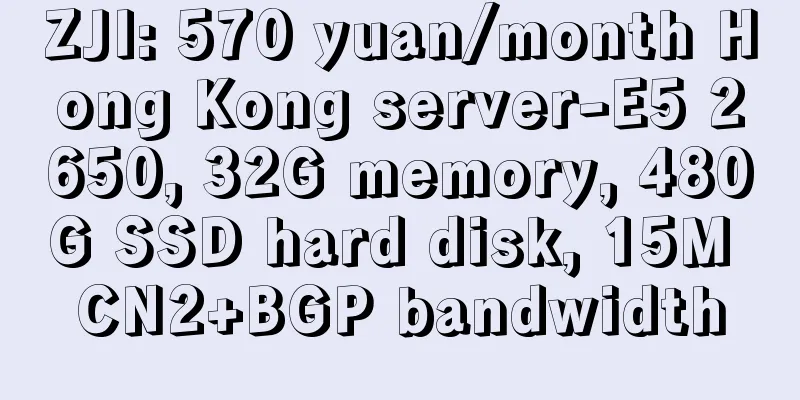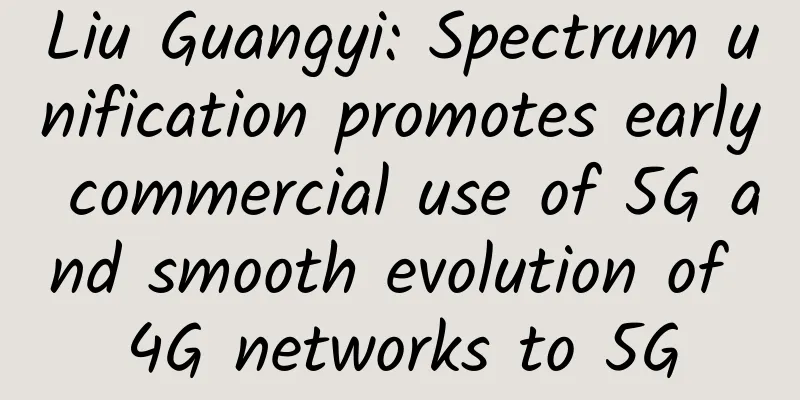Edge computing in 5G

|
01/ Introduction Edge computing is a computing paradigm that enables edge servers in small clouds or edge clouds to enhance cloud capabilities at the edge of the network to perform computationally intensive tasks and store large amounts of data close to user equipment (UE). Traditional cloud computing is a centralized computing paradigm due to the limited processing, computing, and storage capabilities of UEs, which allow UE computing and storage to be in data centers. Edge computing is well suited to the wireless communication needs of next-generation applications, such as augmented reality and virtual reality, which are interactive in nature. These highly interactive applications are computationally intensive and have high quality of service requirements, while generating up to 30.6EB of data per month. The limited capabilities of the terminal ensure the needs of edge computing, including: receiving and storing large amounts of real-time data, processing computing and analyzing data, and making and distributing decisions on a local mini cloud. Therefore, the edge servers in the mini cloud have the functions of the cloud, but at a different scale, and they are located locally, not in a remote data center, which may be far away from the terminal. The contents of this article mainly include: ① An overview of 5G and edge computing, and answers to a large number of questions about the use of edge computing in 5G; ② Classification of edge computing in 5G; ③ The most advanced edge computing solution in 5G; ④ Issues to be resolved; ⑤ Summary of this article. 02 / Overview of 5G and Edge Computing A. Requirements for 5G Systems First, 5G networks can generate a large amount of data for consumers to use; second, strict QoS requirements are required to meet highly interactive applications and ensure ultra-low latency and high throughput; finally, heterogeneous environments must be supported to meet the interoperability of different terminals, QoS requirements, network types, etc. 5G is mainly composed of three emerging technologies. First, millimeter wave communication uses high frequency bands (30GHz-300GHz) to provide high bandwidth; second, small cell deployment allows terminals to use millimeter wave communication to reduce interference and transmission distance; third, multiple input multiple output, or massive MIMO, allows base stations to use large antennas to achieve directional transmission, reduce interference, and allow adjacent nodes to communicate simultaneously. These emerging technologies enable 5G networks to have higher network capacity to supply more terminals. B. Main features of 5G data According to the time characteristics of the data, the data can be divided into three categories: Hard real-time data has a strict predefined delay, such as data generated by games and healthcare; Soft real-time data has a predefined delay, but some predefined and limited delay can be tolerated, such as data generated by intelligent traffic signal control systems; Non-real-time data, delay is acceptable Edge computing is used to process applications and services with hard real-time requirements on edge servers, which can significantly reduce latency due to their proximity to the terminal. For useful services with soft real-time requirements or limited end-to-end latency, if the response latency between the terminal and the cloud is higher than the requirement, the task is processed by the edge server, otherwise it is offloaded to the cloud. Applications and services with non-real-time requirements can offload tasks to the cloud to achieve load balancing. C. The significance of edge computing Edge computing adopts a decentralized model to bring cloud computing capabilities closer to the terminal and reduce latency. The model of cloud computing and edge computing is shown in Figure 1. The cloud server is usually located in the core network, and the edge server is located at the edge of the network. Edge computing can not only run as a single computing platform, but also as a platform that collaborates with other components. At the same time, edge computing makes up for the problem that cloud computing is not suitable for applications with large computing volume, strong interactivity, and high QoS requirements, reduces energy consumption, and also meets the sub-millisecond requirements of 5G applications. Figure 1 Cloud computing and edge computing models D. Key requirements for deploying edge computing in 5G The key requirements for deploying edge computing in 5G include the following: Realize real-time interaction and reduce latency; Perform local data processing and user request processing on edge servers to reduce traffic transmission between cells and the core network; Embed edge servers into base stations to enable convenient access to the cloud and use millimeter wave bands to achieve high-speed data transmission; Ensure high availability of edge cloud services to ensure that services provided at the edge can be continuously and stably provided to users. E. Application of edge computing in 5G environment Many applications in 5G rely on edge computing to enable real-time interactions, local processing, high data rates, and high availability, including: Healthcare, such as remote surgery and diagnosis of medical conditions;
Intelligent transportation system: unmanned vehicles can sense environmental information and respond autonomously in real time; drivers can avoid dangerous roads by sharing or collecting information from traffic centers, thus reducing the occurrence of accidents. 03 / Classification of edge computing The classification of edge computing according to goals, computing platforms, attributes, use of 5G functions, performance metrics, and the role of edge computing in 5G is shown in Figure 2: Figure 2 Classification of edge computing in 5G A. Goal The goals of edge computing in 5G mainly include the following five: 1. Improve data management and process large amounts of latency-sensitive data generated by terminals in real time locally; 2. Improved QoS improves user experience and helps implement highly interactive applications and on-demand services; 3. Predicting network demand helps determine whether to process locally at the edge or in the cloud, providing optimal resource allocation; 4. Managed location awareness enables edge servers to determine their own location and track the location of the terminal, enabling location-based services and enabling location-based service providers to outsource services and data to the cloud; 5. Since the available resources in the edge cloud are limited, it is necessary to improve resource management, optimize the utilization of network resources, and improve network performance; B. Computing Platform Different computing platforms have different computing power and characteristics (such as availability, network infrastructure complexity) to process different types of data. Depending on the specific needs and network scenarios, these platforms can be used alone or in combination. For example, for applications and services with strict QoS requirements, edge servers can be used to process real-time data, which is a case of single use; for healthcare applications and services that contain both real-time and non-real-time data, edge servers can be used to process real-time lightweight data, and the cloud can be used to process heavyweight data, which is a case of combined use of computing platforms. The computing platforms in 5G mainly include the following three: 1. Cloud computing: far away from the terminal, not suitable for real-time services; 2. Edge computing: Close to the terminal, collects, processes, and stores data locally, and provides low latency and delay analysis. Table 1 gives a comparison of the two edge computing platforms. 2.1 Fog computing: Deploy local fog nodes (local hardware devices) to provide local computing. It is a system-level horizontal architecture that distributes computing, storage, control, and network resources and services anywhere from the cloud to the object; but the storage capacity is low. 2.2 Multi-access Edge Computing MEC: Provides storage and computing capabilities at the edge of the network, such as BSs, to improve context awareness and reduce latency. MEC usually connects multiple hosts and monitors the hosts by collecting their information. Table 1 Comparison between fog computing and MEC 3. Cloud computing and edge computing are used in collaboration to make non-real-time and real-time decisions respectively. Combining the advantages of both can greatly reduce latency, but the hybrid platform is more complex. C. Attributes Edge computing has three main attributes: 1. Low latency and short distance: The terminal is very close to the server, and the end-to-end latency and response delay are small. 2. Location-aware: Edge servers collect data from nearby sources without sending it to the cloud. 3. Perceive network context: Make adjustments in real time to optimize resource utilization. D. 5G functions related to edge computing The five enabling factors for edge computing in 5G are: 1. Software Defined Network (SDN): Divides the network into control and data planes, simplifying network management and deployment of new services. 2. Network Function Virtualization (NFV): Network functions are executed in virtual machines, and network requirements are processed in the cloud or at the edge. 3. Massive MIMO: Increase the antenna array to increase network capacity and energy efficiency; at the same time, multiple UEs can offload tasks to edge servers at the same time, reducing latency and energy consumption. 4. Dynamic access wireless access technology: allows access to various devices, improving the scalability of the network. 5. D2D communication: Adjacent UEs can communicate directly; edge computing gives UE computing power, ensuring the success of D2D. E. The role of edge computing in 5G 1. Local storage: Data is offloaded from the UE to the edge cloud, and different storage strategies are provided for different types of data. 2. Local computing: Edge cloud provides terminal-like local computing and data processing capabilities in an independent and autonomous manner. 3. Local data analysis: Data analysis is performed directly locally, and the results of the analysis are then used for decision making. 4. Local decision making: Edge computing helps entities make decisions, such as how to exercise control. 5. Local operation: Edge computing enables remote control and monitoring, especially of critical equipment. 6. Enhanced local security: Since edge computing is very close, malicious entities can be quickly detected and isolated, and responses can be initiated. F. Performance Indicators The performance of edge computing is brought about by its realization of various local functions: 1. Reduce costs: By using local functions (R.1)-(R.5), data no longer needs to be sent to the cloud, thus reducing the consumption of network resources. 2. Higher QoS: Improved QoS and reduced latency through local functions. 3. Energy efficiency: Reduced energy consumption by local functions, that is, offloading tasks and data to the cloud, improves energy efficiency. 04 / Current Technology A. Fog-based solutions ① Cross-layer resource management solution: A hybrid computing platform is adopted, where the edge cloud performs real-time tasks and the cloud server performs high-computation and resource-intensive tasks. Services of different applications are executed in three layers (i.e., cloud, fog, and UE layers). Highly computationally and resource-intensive services are executed in the centralized cloud layer, and the services are offloaded to the fog layer; the terminal layer performs functions locally on the terminal. This solution has the characteristics of low latency and proximity, and provides low end-to-end latency (QoS). ② Energy efficiency model based on throughput and energy consumption: Use fog computing to analyze fog computing and its energy consumption compared to cloud computing; use 5G functions such as dynamic terminal access to rat. This solution has the characteristics of low latency and proximity, and different rats (3G, 4G, 5G) can provide services to multiple different terminals. B. MEC-based solutions ① Architecture for energy-aware offloading: Each mobile terminal decides whether to execute or offload computing tasks to the MEC server to reduce the energy consumption of MEC. This architecture optimizes data management and QoS through local computing and local decision-making; performs energy-aware functions through edge computing; and also uses the 5G function of dynamic access to RAT. The three main steps of this solution are: first, classify the mobile terminal according to its energy consumption and the transmission delay between it and MEC (Type 1 terminals use MEC servers for calculations, Type 2 terminals calculate themselves, and Type 3 terminals can choose to use MEC servers or calculate themselves). Secondly, prioritize the terminals based on energy consumption, available channels, etc. (Type 1 terminals have higher priority and meet delay constraints). Finally, allocate channels of different priorities to the terminals. ② Predictive and proactive caching: Improve data management and predict network demand through local storage and local computing. Use edge computing to perform proactive caching at the edge of the network or at the terminal, while using 5G features including D2D communication. The solution has the characteristics of network context awareness and can obtain network information and traffic distribution. During non-peak hours, frequently requested content is cached in edge servers, BSs or UEs. When the BS requests specific content, there are two possibilities: a) the content has been processed or owned by an influential UE in the past, so it is sent from the UE to the BS via D2D; b) the content is not available on any influential terminal, so it is sent from the core network to the BS. This solution can reduce operating costs. C. Hybrid solution ① In order to enhance MEC, a D2D-based mobile edge and fog computing architecture is introduced to support collaborative computing and perform tasks in multiple computing platforms or paradigms. This architecture has the properties of low latency and proximity. In this architecture, each terminal initiates a request and sends it to the nearest relay gateway, which is connected to the core network or cloud. Its service handler has information about available services. It decides whether the requested service is executed locally or forwarded to another relay gateway that can execute the service. The decision is based on the availability of the service at the relay gateway and its neighboring gateways. ② Propose a real-time, context-aware, service composition and collaboration architecture to achieve fast service combination, which is a merger of multiple services supported by the collaboration of different hardware and software with different functions. The proposed architecture uses hybrid computing to support collaboration between cloud, MEC and terminals. In this architecture, frequently accessed blocks are small units decomposed from files and stored or cached in MEC servers. Blocks requested by multiple servers are copied and cached in other MEC servers based on file type and content. This helps reduce the end-to-end latency caused by accessing the cloud. 05 / Unresolved Issues A. Improve service QoE QoE is a measure of the customer's overall satisfaction level with the service provider. It is related to, but different from, QoS, which reflects both hardware characteristics (such as the amount of memory) and software characteristics (such as interface development). The current problem is how to achieve a balance between: a) higher availability or seamless connectivity of applications, which can be provided by the cloud when the terminal is away from the vicinity of the edge server; and b) when the terminal is near the edge server, the edge cloud can provide higher application QoE to reduce latency and jitter. B. Protocol Standardization Protocol standardization requires that edge computing in the 5G environment must have a set of generally accepted rules. Because edge cloud is too flexible and different vendors customize different rules, it is difficult to reach a consensus on a standard. At the same time, a large number of heterogeneous terminals use different interfaces when communicating with edge cloud. These are all challenges in the protocol standardization process. C. Heterogeneity Problem The heterogeneity of communication, computing and other technologies in edge computing in the 5G environment, for example, the large differences in data transmission range and transmission rate among different companies, makes it difficult to develop portable solutions across different environments. This is the heterogeneous problem. D. Security and Privacy In edge computing, data cannot be transmitted across networks, which enhances security and privacy to a certain extent, but there are still hidden dangers at the edge of the network. First, the dynamic environment causes the data and network requirements of different network entities to change rapidly; second, the increase in the number of devices communicating with each other requires a scalable solution. In order to enhance the robustness of the network, these problems must be solved, but may increase complexity and cost. 06 / Summary This paper reviews the latest developments in edge computing in 5G communications, including fog-based, MEC and hybrid solutions, and introduces edge computing methods and their characteristics for different feature classifications. The key requirements for edge computing include real-time interaction, local processing, high speed and high availability. The article points out the problems faced by 5G deployment of edge computing, such as service enhancement, standardization, heterogeneity and security vulnerabilities, and briefly introduces the direction of technology development. The deployment of edge computing in 5G brings many benefits, but also brings some new problems that require joint efforts of scientific researchers and society to solve. References [1]N. Hassan, K. -LA Yau and C. Wu, "Edge Computing in 5G: A Review," in IEEE Access, vol. 7, pp. 127276-127289, 2019, doi: 10.1109/ACCESS.2019.2938534. [2]1. WZ Khan E. Ahmed S. Hakak I. Yaqoob and A. Ahmed "Edge computing: A survey" Future Gener. Comput. Syst. vol. 97 pp. 219-235 Aug. 2019. [3]K. Cao, Y. Liu, G. Meng and Q. Sun, "An Overview on Edge Computing Research," in IEEE Access, vol. 8, pp. 85714-85728, 2020, doi: 10.1109/ACCESS.2020.2991734. |
<<: 5G Internet: A High-Speed Alternative to Cable?
>>: Soul-searching question: Do you fully understand TCP&UDP?
Recommend
A new model for 5G smart factories
In the 5G era, smart factories will greatly impro...
What role does a switch play in a network?
Switches play an important role in increasing the...
How will the cancellation of data "roaming" fees, which has aroused nationwide praise, trigger a "butterfly effect"?
At the first session of the 13th National People&...
Why are unlimited data plans dying?
Regardless of whether it was a unified arrangemen...
Inspur Network Electronics Range Training Base officially launched
Recently, the "Inspur Network Electronic Tar...
4G is a knife, and 5G is a Swiss Army knife?
[[189173]] If the 4G network is a knife that can ...
Experts: Operators have invested a lot but the output is very small, and number portability may be difficult to implement nationwide
Number portability, also known as number portabil...
HostYun: Hong Kong/Japan/Australia/Russia/South Korea/Los Angeles, etc. CN2 GIA/AS9929 monthly payment starts from 16 yuan
HostYun is a long-established low-cost VPS hostin...
Http code: What does 304 mean? How much do you know?
picture 1. http code 304 Not Modified The HTTP st...
Ministry of Industry and Information Technology: More than 1,800 "5G + Industrial Internet" projects are being built nationwide
Reporters learned from the press conference of th...
GreenCloudVPS 9th anniversary, $15/year KVM-2GB/20GB/2TB/San Jose and other data centers available
GreenCloudVPS recently launched its 9th anniversa...
Simple test of BandwagonHost special price annual VPS (DC6)
Last time when BandwagonHost launched a special o...
KVMLA 11th Anniversary: Japan/Singapore E3 dedicated server special price 280 yuan/month, VPS host 35 yuan/month
KVMLA is a well-established Chinese hosting compa...
Voice message application series——Unlimited message listening assistant
who I am Hello everyone, my name is NGCSS (Next G...
JD.com's Lv Jianwei: Black technology leads the new era of e-commerce
[51CTO.com original article] On July 21-22, 2017,...









